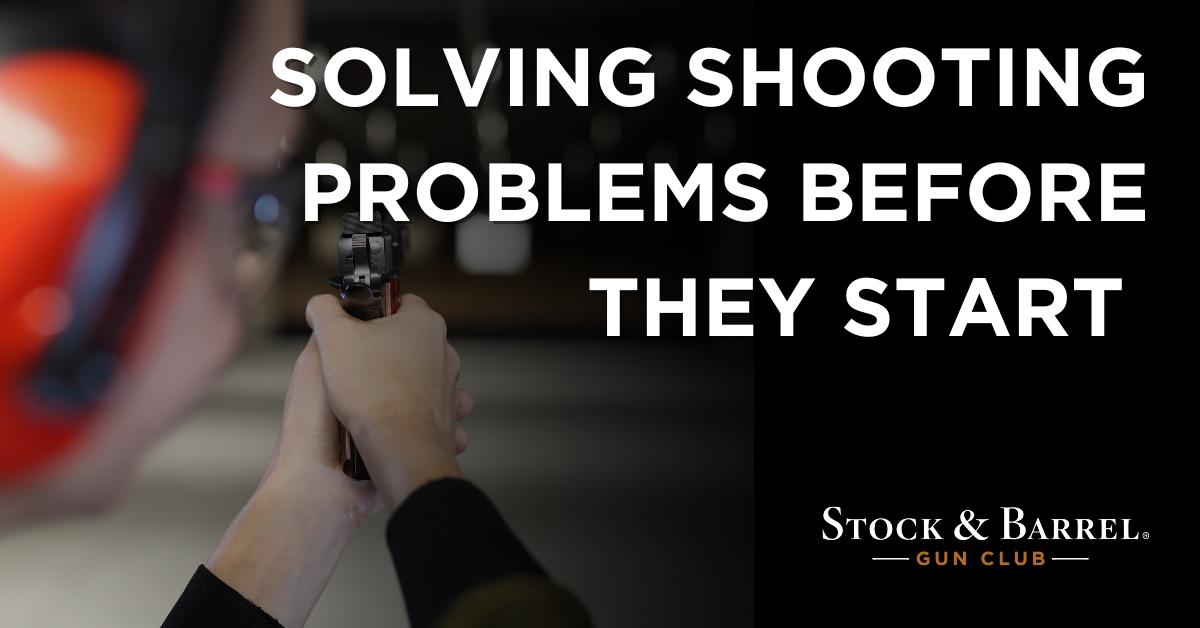Make no mistake, shooting is difficult. Since the invention of gun powder mankind has been on a constant progression towards proficiency with projectile weapons. What we’re going to do is shave some of that curve and help you build confidence, allowing you to enjoy the outcome faster.
Let’s start with picking the right tool. Is it possible to be successful with the wrong firearm? Yes. Is it drastically more complex? Also, yes. Everyone seems to have all the knowledge in the world when it comes to shooting. Whether it’s your uncle who was in law enforcement decades ago, a significant other, or the latest social media personality, sorting through the flood of information is difficult. Their guidance often starts with which gun you should buy. Like anyone else, they have a bias. Unfortunately, their preference usually has little to do with your needs and more with their prior experience. Ask yourself this question, would you buy a car simply because the salesperson told you that was the car they would buy? Not likely. Choosing the right firearm for yourself should work the same way. Consider what you will use it for first. From this point, work backwards to figure out how to prioritize accessories. Your budget should – and will – also be a significant consideration. If you’re spending all your money on the firearm, that misses the mark. You’ll also need range and defensive ammunition, cleaning equipment, and a proper transport or storage method. Starting with the right gun will be vital in correcting errors before they start.
A key indicator of where difficulties can crop up is how a firearm feels in your hands. For simplicity, let’s stick to handguns. When gripping a pistol, your grip strength should be distributed between 60%-80% support hand grip and 20%-40% firing hand. The difference in percentages on each hand concerns an individual’s physical ability. If you had major surgery on a hand for carpal tunnel, you’re likely to produce less strength in that hand. The rule here is you need to be able to move the trigger finger of your firing hand smoothly and without difficulty. If that movement is strenuous, you likely need to relax your firing hand and grip more with your support hand. Recoil should be managed after the handgun has been fired. The desire to fight recoil is why we typically see shots go low. The easiest way to solve low shots is to be deliberate about pressing the trigger, and reducing the pace at which you shoot, until you find what you need to do to be accurate. If your neck, shoulders, and arms feel like you just got beat up at the end of shooting, you’re likely tensing. Taking a conscious breath between shots, focusing on relaxing major muscle groups, and letting your elbows bend slightly will help. Make sure your feet are shoulder-width apart, and your toes pointed slightly outward in the target’s general direction. All these issues are where having a qualified person watching you shoot, like the staff at Stock & Barrel, will be an excellent investment.
Over the past ten years, we’ve learned quite a bit about shooting through how the human eye processes information. The advent of red dots on handguns, and optics on rifles has pushed that science in shooting to new levels and allowed us to build a strong understanding of what you should see while shooting. Let’s start with iron sights. Imagine the walls of a castle with towers. If you imagine the walls of a castle and the staggered stones at the top, three of those stone pillars are what you should see in your iron sights. Even across the top, an equal amount of light on either side of the front sight. As you press the trigger, your eyes should focus on the front sight and switch to the target, alternating your eyes’ focus back and forth. As you press the trigger, your sights should move as little as possible. With a red dot, your eyes should be focused on the target the entire time, with the red dot blurry in your vision. That is one of the most significant advantages of a red dot on a handgun; they require less visual “work” to attain proper sight picture. After recoil, the sights should settle back into your vision roughly, if not precisely, in the same place. It would be best if you got into the habit of not looking at your target after each shot. Consider that in competition or defensive use; you want to look at the outcome of your shots after they’ve been fired.
Once the fundamentals of grip, stance, and sight are established there are some tips, tricks, and best practices you can start using to push your ability even further. If your goal is to get better at shooting with two hands, practice shooting with one hand. Make sure to alternate back and forth between your firing hand and support hand. As you do so, pay attention to your grip. You’ll note a difference between the two hands quickly. If your goal is to deliver accurate shots faster, one of the best ways to do that is by practicing double taps. A double tap is getting a good sight picture, pressing off two rapid shots, and a sight picture at the end. You should fire as fast as you can control the handgun and hit your acceptable target zone. The same is valid for rifles. There are three primary training variables that will increase your overall skill level: increasing target distance, decreasing target size, and adding the element of time via shot timer. Any of these three factors will make you a better shooter. If you’re able to gradually integrate them as your training progresses, the results will be exponential.
The best thing you can do is to arrive with a plan for each range session. Choose only one thing to address, and focus on the one goal for that session. Once you’ve achieved repeatable consistency, address the next issue. Above all, don’t be too hard on yourself. This is a pursuit that has no end, and that’s the beauty of it.
OTHER BLOGS YOU WILL FIND OF INTEREST:
- Benefits Of Training In A Shooting Simulator
- Firearms Training; A Journey Not A Destination
- Firearms Classes For Ladies
CLASSES YOU MAY BE INTERESTED IN:
- Intermediate Handgun Shooting Skills in Chanhassen and Eagan
- Mn Multi-State Permit To Carry in Chanhassen and Eagan
- Clearing Handgun Malfunctions in Chanhassen and Eagan





